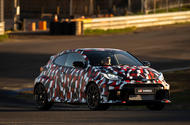Success of GR Yaris has enabled Toyota to make a facelift, enhancing the car’s durability and speed and doing no harm to its extraordinary levels of fun – even with an automatic option
Toyota was so concerned that it might not be able to sell all of the required 25,000 GR Yaris models it needed for World Rally Championship homologation that it created a cheaper, ordinary version of the three-door car for Japan, called the RS. It comes with the standard Yaris’s humdrum 1.5-litre hybrid powertrain and none of the fancy running gear or hardware. They designed it to make up the numbers if the GR Yaris wasn’t successful.
As it is, the good people at Toyota have been taken aback by the little hot hatch’s popularity. They’ve now made 32,000 of them and counting. Not only has that justified this facelift, which they didn’t imagine they would ever be in a position to produce, but it also means they’re now committed to the GR Yaris for the longer haul. So long as they can sell them (not a given in the UK or EU, given emissions limits), they will keep making them.
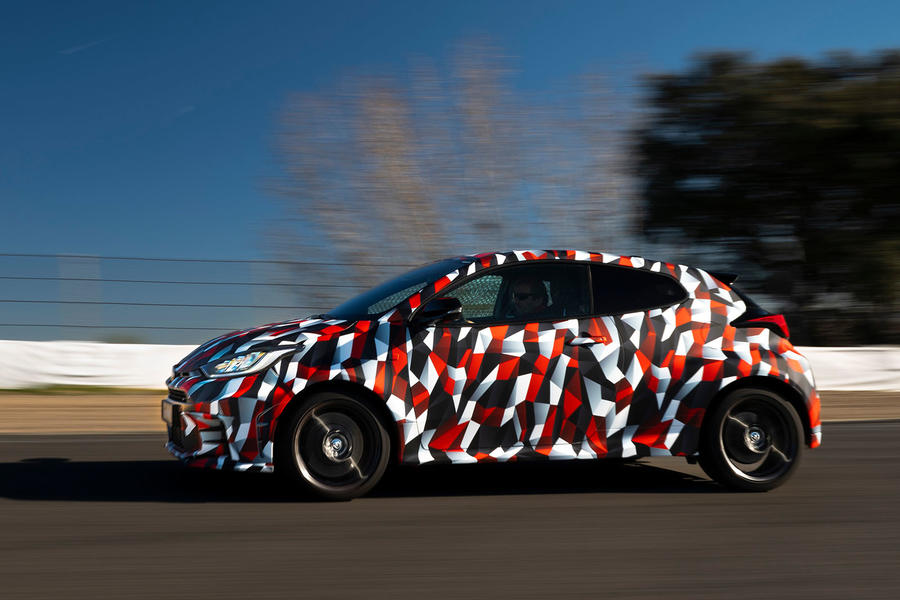
In the meantime, they’ve also been rallying and circuit racing it and discovering its limitations, which have played into this facelift. They’ve crashed it, melted it and burnt it so that you don’t have to. The headlines are that there’s now more power and the option of an automatic gearbox, but the detail changes run much deeper.
At the front, the bumper is now made in three pieces, rather than one, so that it’s quicker to replace a corner if you nerf it off on a race track. The centre section includes a larger cooling aperture, necessary for engine durability, and its grille is now made of metal, rather than plastic, so that debris doesn’t burst through it, exposing the radiator to holing the next time it happens. At the rear, the low-level reversing light has been moved level with the other lights – hot exhausts could and have melted it – and the high-level brake light has been moved from the spoiler to the rear window, because it was upsetting tuners who fitted their own rear wings. My test cars here are disguised, but I’m told that otherwise the visuals – including 18in wheels with 225/40 Michelin Pilot Sport 4S rubber – are unchanged.
The body changes are ones you can’t see. There’s a 15% increase in the number of spot welds and a 15% increase in the adhesive used, to stiffen the shell. Weight is unchanged, at 1280kg. The front struts are now more securely mounted by three bolts, rather than one larger one. And there’s a floor change that lets the driver’s seat be mounted 25mm lower, as one consistent bit of customer feedback was that it was set too high. The rear-view mirror has been raised by 25mm and the instrument binnacle, now digital, has been lowered by 50mm to improve forward visibility. And minor switchgear changes put more buttons in range of the driver’s sight and reach if they’re harnessed into competition seats.
The engine and drivetrain get the most serious enhancements. Changes to the 1.6-litre three- cylinder turbo petrol engine are mostly for durability. Cooling has been increased hugely, with modifications to the air intake and intercooler spray, too. The valvetrain is strengthened, the exhaust valves are of a new material and new, lighter pistons with more wear-resistant rings have been introduced. The fuelling and sparking software is also different, of course, giving increased injection pressure. Power has been raised from from 257bhp to 276bhp, still at 6500rpm, and torque from 266lb ft to 288lb ft, coming in 250rpm later than before, at 3250rpm. The six-speed manual gearbox has had its linkages strengthened and its shift action slightly improved as a result, but the bigger transmission news is of course the new eight- speed automatic gearbox.
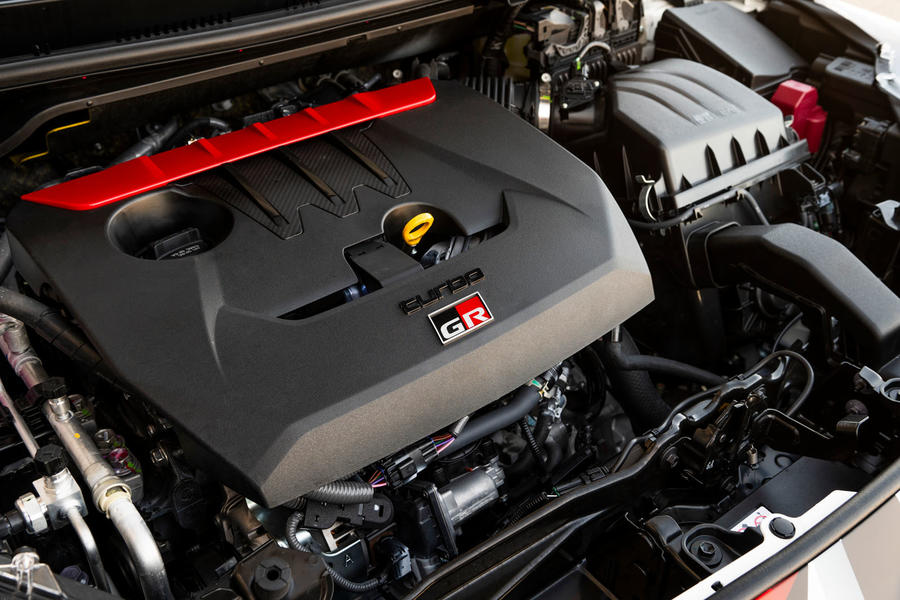
It’s a torque-converter, rather than a dual-clutcher, but its lock-up plates are beefy and programmed to firm up quickly to reduce losses (the traditional advantages of a torque converter – the slushy smoothness – are a low priority). It’s also relatively compact and weighs just 20kg more than the manual transmission. There is a launch control system, and Toyota says that not only is it quicker by 0.3sec from 0-62mph, but it’s also faster by more than a second a lap than the manual around Japan’s Fuji Speedway and durable enough for racing, where it will be faster and reduce driver fatigue. As importantly, there are potential customers who simply won’t (or can’t) drive a manual.
The torque-sensing differentials are the same between the manual and automatic cars, but the power distribution is adjusted for this-generation Yaris. There were Normal, Track and Sport modes in the first-gen car; now there are Normal, Track and Gravel driving modes. In Normal, power distribution is 40% rear-biased. In Gravel, it’s 47% rear-biased. But most relevant to our drive today is Track, which has a variable power distribution, putting anything from 40% to 70% to the rear.
Lastly, spring rates have been increased. With the Circuit Pack, which the vast majority of buyers have opted for, the springs have gone from 36N/mm all round to 46N/mm at the front and 40N/mm at the rear. The front anti-roll bar is a little stiffer, but the rear is unchanged and there won’t be a softer suspension option.
I’m driving only on a track and in disguised, not-quite-production- finished cars (hence no star rating), but it’s a comprehensive test, with maximum hooning allowed, no co-driver or pace car and an original GR Yaris available for back-to-back testing.
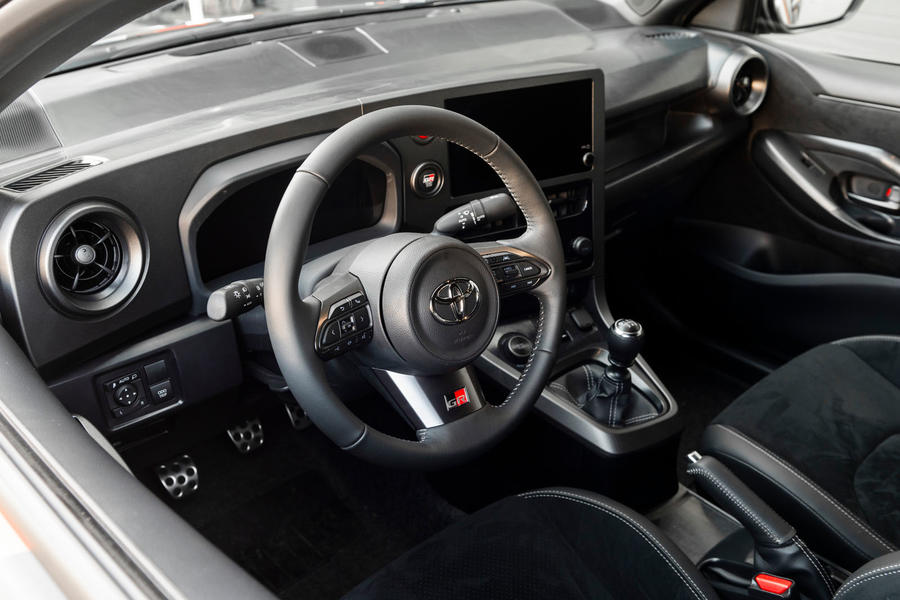
The old car is the hoot we all remember it as being. It has such Tiggerish enthusiasm for corners that it’s easy to see why road test editor Matt Saunders came back from the original drive bursting with excitement about a very new yet old-school performance car. So Toyota really isn’t working from an unsound basis, but the facelifted car’s advantages are immediately obvious.
The lower seat improves the driving position so that you feel more in the car than on it and your forward visibility is massively enhanced. I’m slightly sorry to see the old analogue dials go, but the digital instruments focus on the important things – speed, gear position, revs – and overall the dashboard is clear.
Most importantly, the driving experience hasn’t been dimmed at all. The stronger front springs and anti-roll bar could have reduced turn-in enthusiasm, and maybe they have taken a little edginess from initial turn-in, but it still feels wildly agile. The new transmission calibration still lets it straighten the line on corner exit. But the overwhelming experience remains. This is a car that turns exceptionally willingly, allows a bit of roll to lean against, generates fantastical grip and then pings itself out of a corner with its four wheels shuffling to maximise every bit of traction.
I prefer the manual, but the auto is good. It shifts intelligently in D, but take control yourself and shifts are quick and smooth enough, and if the 20kg changes the handling, I couldn’t feel it. Brake feel is terrific with either transmission and the steering has a great weight build-up and road feel. This is the five-star car we know and, on this evidence, nothing but enhanced.
Production will begin in April and cars will start arriving in June. If you have a current GR Yaris on order, there are some months left to build it and they will sell it to you, but you could opt to delay and take an ‘Evo’. Why wouldn’t you? The first one is still great and Toyota has not only been surprised by the number of customers for the GR but also by their relative wealth. It’s not bought like, say, a Ford Fiesta ST. A lot of customers have several expensive cars but use the GR Yaris as their daily.
This is a costly car to develop and build, and Toyota is now more confident about its future. Pricing won’t be released until March, but I wonder, given all that, whether it will take a rise. I would love to be wrong and hear that the engineers squeezed development costs past the accountants by saying they spent £500,000 on pencils. But either way, one of the great current performance cars just got better.
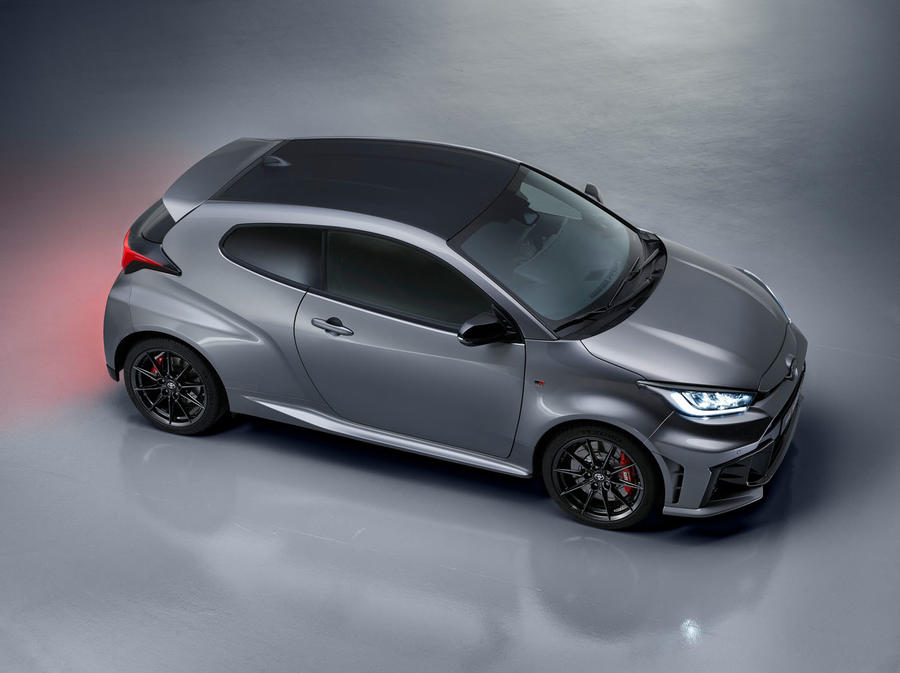
Technical specifications: Toyota GR Yaris
Engine 3cyls, 1618cc, turbocharged petrol Power 276bhp at 6500rpm Torque 288lb ft at 3250rpm Gearbox 6-spd manual (8-spd automatic option) Kerb weight 1280kg (1300kg automatic) 0-62mph 5.1sec (est, manual) Top speed 145mph (est) Economy 39mpg (est) CO2, tax band 185g/km, 37% (est)
Source: Autocar
